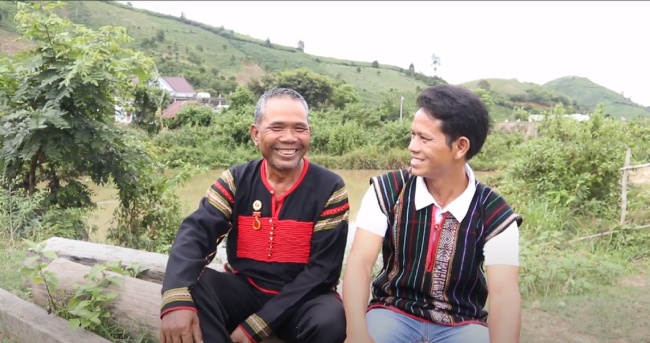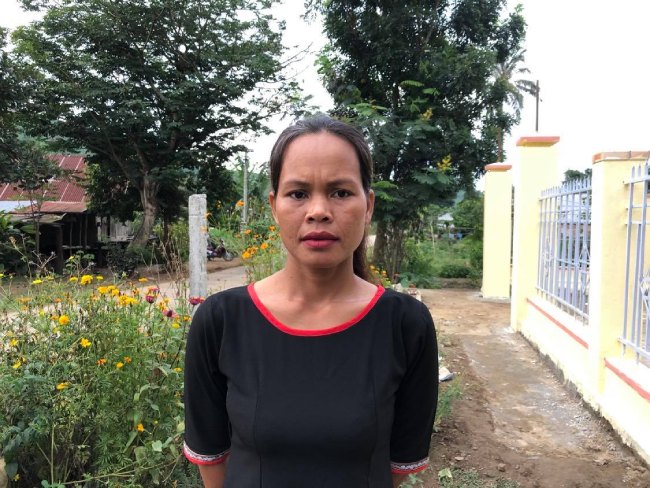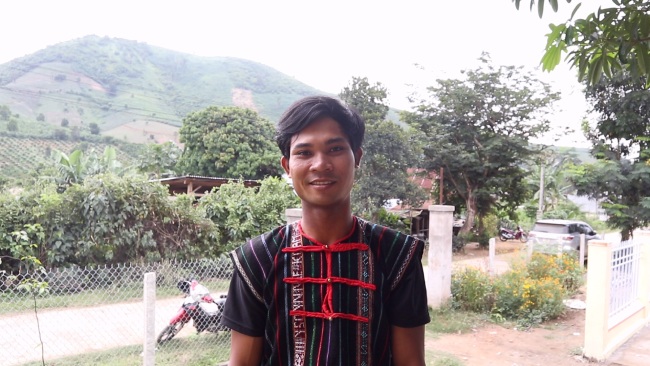Vietnam is recognized as one of the world's most biodiverse…

New generation inspires village reforestation in Vietnam’s Central Highlands
H Ten Nie loves planting forests. In 2018, her family planted one hectare of forest. In 2020, they planted another hectare of trees – Hopea odorata, a native species to the area that grows up to 45 metres tall.
The forest means everything to their way of life. This is why H Ten organized reforestation efforts in August 2020 in her community in Tul, a village in Viet Nam’s Central Highlands.
“I want to plant more, but I need help,” said H Ten. “That’s why I mobilized community members to plant trees in Tul. I started planting forests so that people will see the benefits and want to follow me to grow their own seedlings, which will help make the village green and beautiful.”
H Ten is a pioneer in reforestation, the process of planting trees in areas that have been degraded. She advises local people to plant forests to protect the land and water for their children.
“I recommend they plant short-term crops such as acacia to restore soil fertility by improving nitrogen fixation and as a means to earn money from harvesting non-timber products,” she said.

In 2020, People and Nature Reconciliation (PanNature) provided ethnic minorities of Tul with more than 4,000 indigenous plants and fruit-bearing trees to promote sustainable farming methods and reforestation. The majority of community members supported the reforestation efforts.
H Ten was eager to participate in tree planting activities with other women in the village. Not only did they plant in the watershed forest, but they also restored forests burned or destroyed after fires, landslides, and flash floods, which regularly occur in the area.
Women can contribute to forest protection. Their daily work is conducted in areas near the forest, such as caring for the cattle, managing the crops, and collecting non-timber forest products. Their daily proximity to the forest allows them to easily detect any changes and illegal activities in the forest.
Y Nai Nie loves the forest like H Ten Nie. Currently, he is the leader of the forest plantation group of Tul. With the government’s investment in seedlings for reforestation, he can increase green cover in the village.
“I want to maintain the village’s reforestation movement,” said Y Nai Nie. “I am young and healthy so I can patrol the forest despite the difficult terrain or storms and floods. I am always willing to raise people’s awareness of forest protection, and its importance in providing forest products for local people such as wood, bamboo shoots, and fruits. This is a good way to contribute to a better future where people live in harmony with the forest and the environment.”
Y Nai wants to remind the younger generation to protect the forest and take care of it like a family member.

H Ten and Y Nai are just two of many people in Tul who want to protect and sustainably manage the forest.
Y Thac Nie, a senior community member of Tul, expressed his optimism. Y Thac believes that the more descendants who live responsibly with the environment, the brighter and more sustainable the future will be.

“I hope young people continue improving their knowledge of forest protection,” said Y-Thac. “Our forefathers and my generation have already protected and planted trees for a better future, now the young people in Tul should do the same thing for the next generation.”
*This story is produced with the financial support of the European Union. Its content is the sole responsibility of PanNature and it does not necessarily reflect the views of the European Union. To find out more about this and other activities under the EU-funded Voices for Mekong Forests, please visit the project page.
For more information on what Tul villagers have done so far in reforestation, please watch the video below:
The story was written by Nguyen Ngoc Hien/PanNature.



